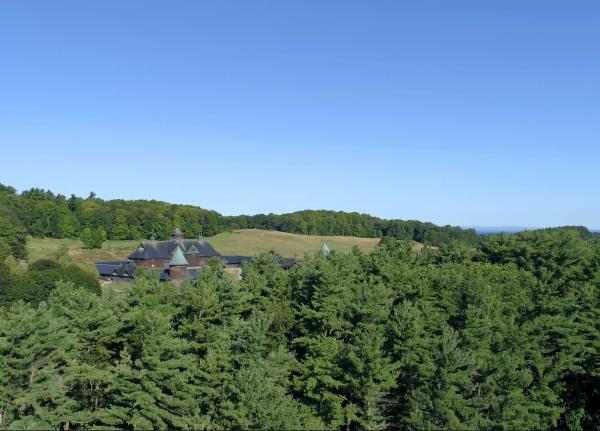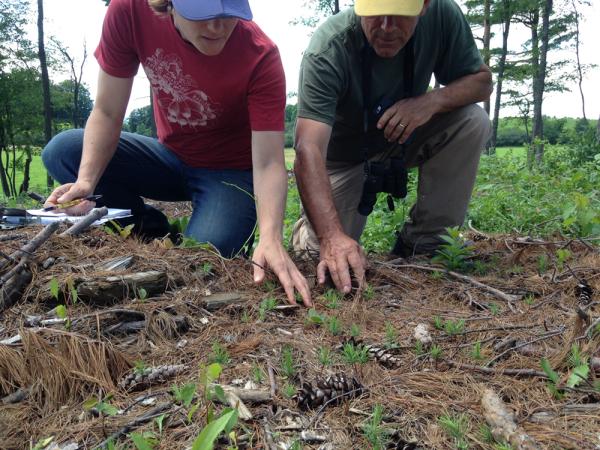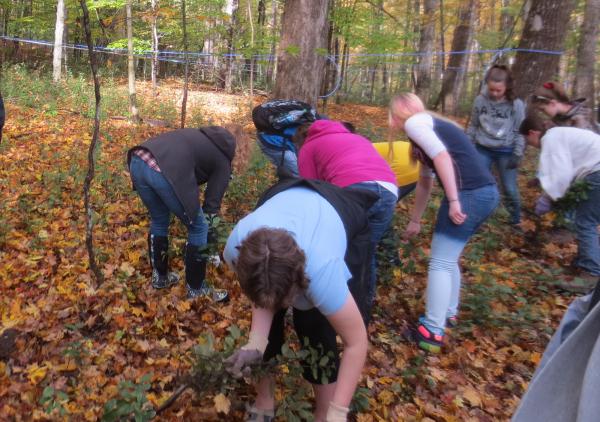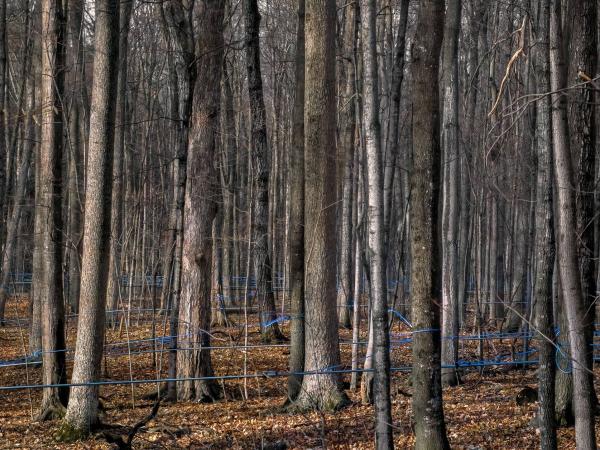The future of our Farm forests
The forests at Shelburne Farms are strong and healthy, with broad, closed canopies that shelter the understory.
But there are struggles in the woods, and we are noticing changes. As trees are falling, or being cut, they are not being replaced by the same species. An oak canopy isn’t necessarily begetting an oak understory anymore.
Here’s what’s happening instead: Whether we cut trees for lumber/firewood, or they’re felled by storms or age, their loss opens up patches of sunlight on the forest floor. That sunlight should trigger replacement tree seeds to germinate. But here, and in many places in the Champlain Valley, invasive earthworms have stripped the forest floor of its organic layer. There’s no “cradle” of soil to nurture new seedings, so they struggle to grow.
This doesn’t seem to bother invasive tree/shrub species like buckthorn or honeysuckle as much, so they move in. (In part, their competitive advantage is that they leaf out earlier in the spring than other species, and hold their leaves longer in the fall.) And for native tree seedlings that do survive in the thin topsoil, they then have to survive the deer nibbling at them. Ultimately, the new understory becomes all invasives.
Invasives are not new in the Champlain Valley (or anywhere). (Check out this rogues gallery of invasives.) Woody plants like buckthorn and norway maples have long thrived at the Farm, especially along the sunny edges of woodlands. And herbaceous invasives like garlic mustard and wild parsnip have likewise found a home here, even as we work to control them.
What’s changed is that we need to adapt our previous forestry plan to help guide us through these realities. While our existing plan from 2009 is ecologically sensitive to the where and when of tree harvesting (and has great data on the harvest history of various stands), it assumes that trees will “naturally” regenerate after the cuts. We can’t assume this anymore. Increasingly, a “forest” management plan needs to include some component that’s an “invasives” management plan.
What might that look like? That’s the question. Many landowners -- at least where controlling buckthorn is concerned -- turn to chemicals. Specifically, glyphosate (aka “Roundup”). As a public farm dedicated to educating for sustainability, that’s not a great solution for us. We’ve relied more on mechanical removal: physical labor or machine labor. But machines have their own downside: a reliance on fossil fuels. The problems become pretty complex pretty quickly!
If we can control or suppress the aggressive invasive plants (eradicating them is not realistic), then we might try to replant areas with older saplings, as a way to get around the worms impact on the soil. And finally, we’d need to fence regenerating areas to keep the deer out.
But no approach guarantees success. The bottom line is that any plan we devise must be open and adaptive. We will have to be, too. We’ll have to be more experimental--try things and see what happens. We will likely also have to be more routinely vigilant against invasives. A new 10-year management plan, with 1-year work plans embedded within it, will help us.
It might take us a couple of years to create that plan. One first step is to collect current data on the condition and composition of our forests: species distribution, age distribution, etc. This foundational information will help us track changes and impacts down the line. It’s critical. We’ll be starting that data collection hopefully this fall.
Ultimately, there’s far more at stake than maintaining productive, diverse stands for making lumber or maple syrup. Forests are critical for carbon sequestration in the battle against climate change. So as we plan for ecologically resilient forests, we are helping to keep carbon out of the atmosphere, too.
--------------------------
Thanks to Tony D’Amato, UVM Professor of Forestry, Ethan Tapper, Chittenden County Forester, and Kate Forrer, UVM Urban & Community Forestry Outreach Specialist for participating in a recent summit on reenvisioning the forests at Shelburne Farms and contributing to our understanding of the complexities of forest management.



